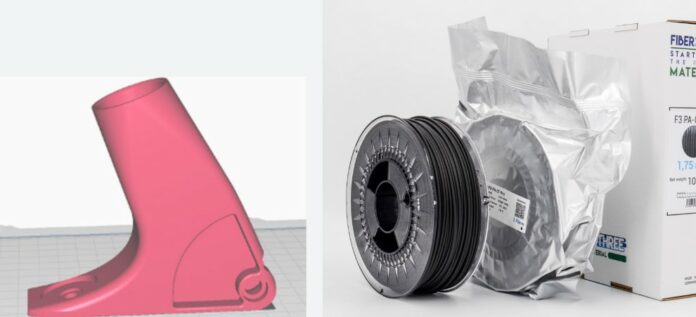The evolution of drones from flying cameras to indispensable assets across sectors such as agriculture, entertainment, and emergency response has driven the need for custom-designed drone components. The problem is drone producers like Third Element Aviation still face challenges to produce drone components for their Auriol drones.
In Third Element Aviation’s case especially, their drones require parts with great strength and precision. To improve production reliability, the German company has been working with 3D printing material producer Fiberthree and Thought3D, known for the Magigoo bed adhesives and Drywise in-line filament dryer. This collaboration aims to enhance 3D printing quality assurance for prototyping and production of end-use drone components.
Relying on carbon-filled nylons and FDM 3D printing
Carbon-filled nylons emerge as robust materials, yet their susceptibility to moisture absorption presents challenges to their integrity. Manufacturers continue to improve these materials, but external factors can influence their performance and further complicate the process of achieving flawless parts. These factors may include user environments, improper handling, and inadequate drying equipment.
By incorporating Fiberthree’s advanced materials and Drywise’s innovative in-line filament dryer, Third Element Aviation witnessed a transformative enhancement in part quality and reliability. This integration resulted in superior drone strength, precision, and functionality. The in-line drying process ensures uniformity, eliminating batch inconsistencies, and the approach minimizes waste, enhancing production rates and reducing costs.
By joining forces Fiberthree and Thought3D highlight the importance of proper filament handling.
By incorporating Fiberthree’s materials and Drywise’s in-line filament dryer, Third Element Aviation witnessed a transformative enhancement in part quality and reliability. This integration resulted in superior drone strength, precision, and functionality. The in-line drying process ensures uniformity, eliminating batch inconsistencies, and the approach minimizes waste, enhancing production rates and reducing costs.
As FDM 3D printing continues to evolve, solutions like in-line drying play a crucial role in new applications where critical part quality assurance is important.
e AM Industry on 3D ADEPT Media or look for a job via our job board. Make sure to follow us on our social networks and subscribe to our weekly newsletter : Facebook, Twitter, LinkedIn & Instagram ! If you want to be featured in the next issue of our digital magazine or if you hear a story that needs to be heard, make sure to send it to contact@3dadept.com






